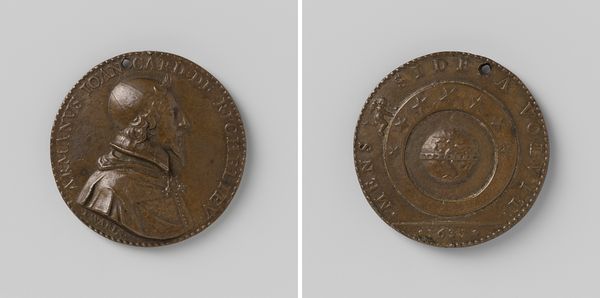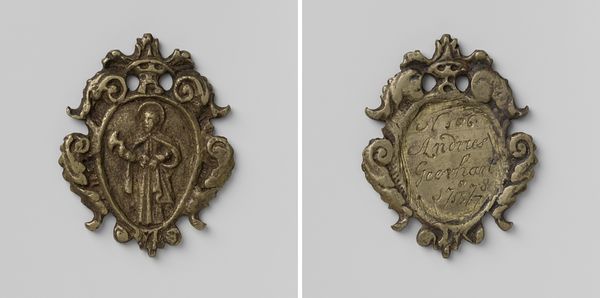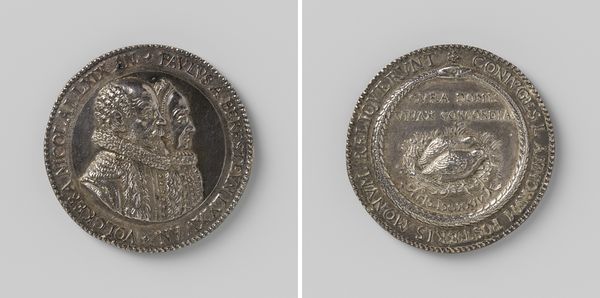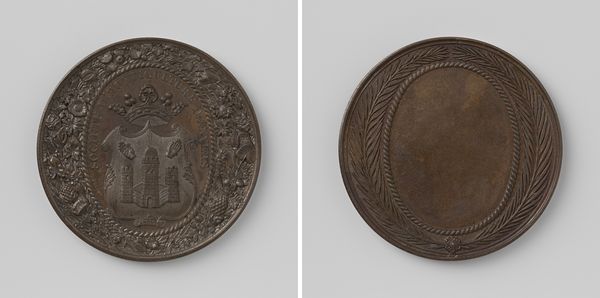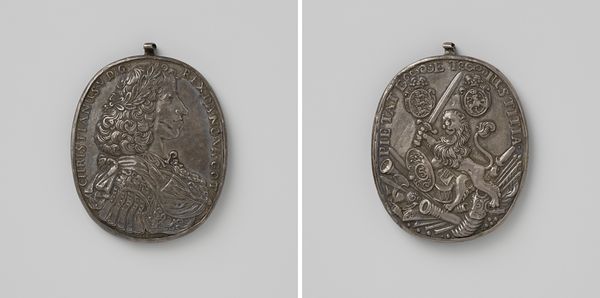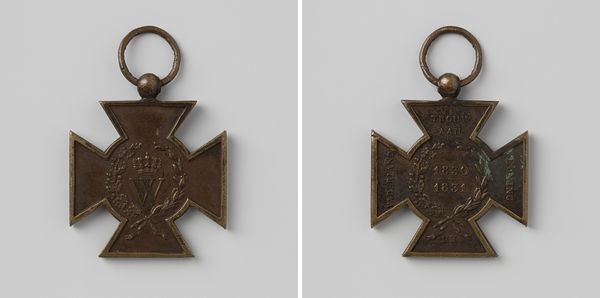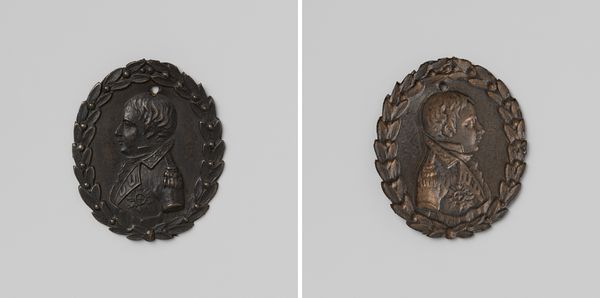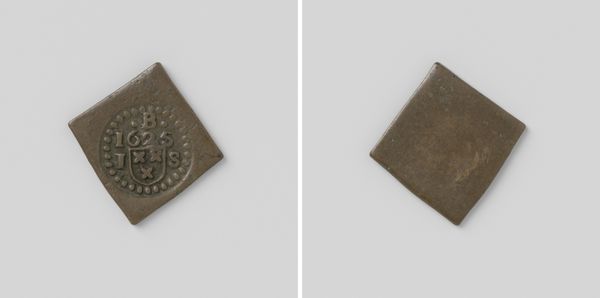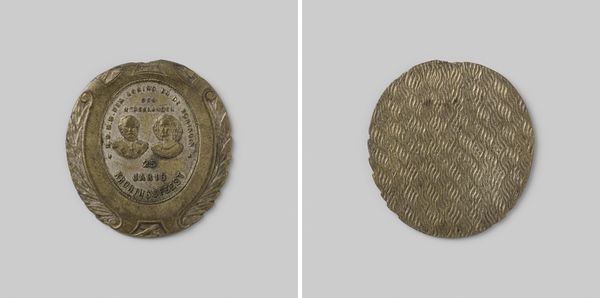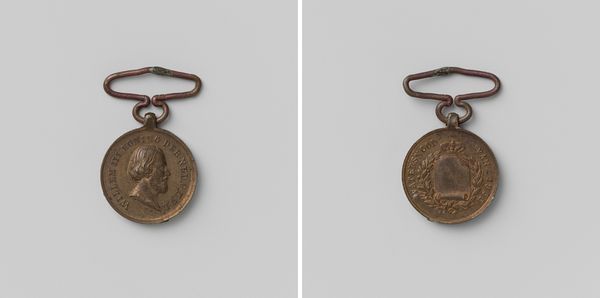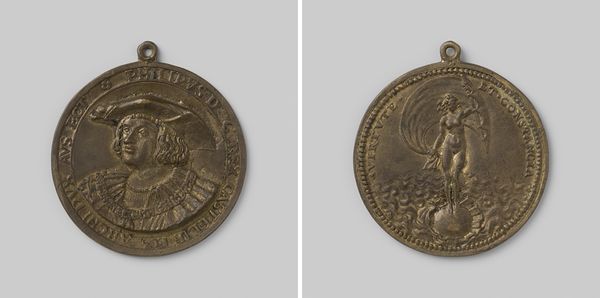
relief, bronze, sculpture
#
portrait
#
baroque
#
sculpture
#
relief
#
bronze
#
figuration
#
geometric
#
sculpture
#
history-painting
Dimensions: diameter 3.8 cm, weight 168 gr
Copyright: Rijks Museum: Open Domain
Curator: This bronze relief sculpture is titled *Verheffing van de prins van Oranje tot stadhouder*, or *Elevation of the Prince of Orange as Stadtholder*. It was created anonymously in 1747 and resides here at the Rijksmuseum. Editor: The sun-like design feels almost primal. The dark bronze is strangely muted, almost earthy, despite the grand historical subject matter. Curator: It's worth examining the broader implications of producing and distributing such a work during this time. Stadtholder William IV's appointment marked a significant shift, restoring the House of Orange to power. Medals and reliefs such as these functioned as crucial tools in shaping public opinion and disseminating carefully curated images of leadership. Editor: How do you think contemporary audiences might view such blatant visual propaganda? The symbolism is laid on so thickly – it’s almost overwhelming! I’m interested in exploring its connection to historical representations of power and how it reinforces or challenges existing sociopolitical structures. I wonder about its impact on women and people of color specifically during that era. Curator: Precisely. The formal language aligns with Baroque conventions. The sunburst design emphasizes divine right, projecting authority through a combination of artistry and statecraft. Think of the cultural and intellectual influences converging here: Dutch republicanism negotiating with monarchical iconography. Editor: It feels like the imagery used has roots far earlier than 1747 too – sun symbols have always been associated with authority in various cultures. And yet, the execution – a relatively modest bronze relief – hints at a democratization of power, as though leadership can be circulated like currency. Who was its intended audience and how were they supposed to react? Was there even an organized resistance? Curator: An intriguing thought – mass production potentially altering the dynamics of rulership. Now, consider the broader historical sweep. These objects narrate critical moments, offering insights into social movements, power struggles, and shifts in collective memory. The relief offers insight into institutional biases and structural inequalities. Editor: And through critically reassessing artworks like this one, perhaps we can actively contribute towards decolonizing inherited perceptions and embracing a multiplicity of voices? Curator: That’s why engaging with these objects remains so vital. Thanks for illuminating so many layers here. Editor: Likewise, your ability to contextualize this work truly brought it to life.
Comments
No comments
Be the first to comment and join the conversation on the ultimate creative platform.
